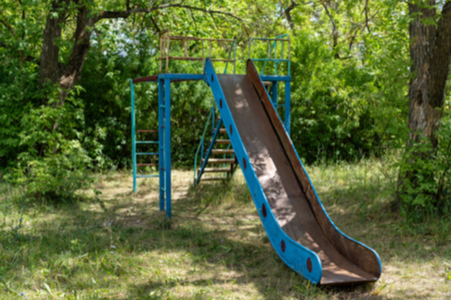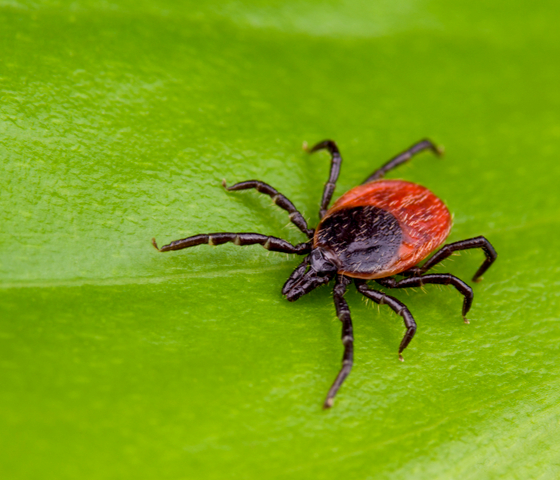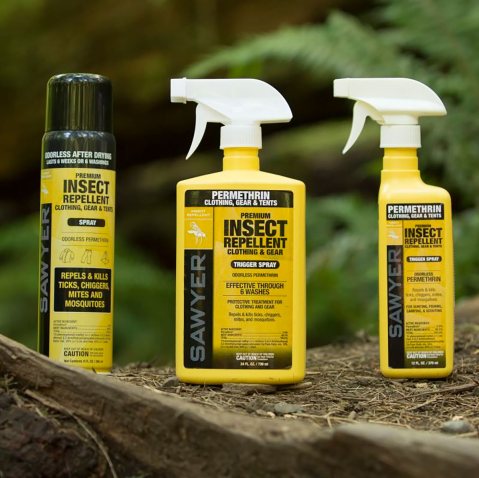Personal Protection Strategies
- Tick Avoidance. Deer ticks require a damp, humid environment to survive and are most often found in wooded areas and wooded edges, especially in leaf litter and low ground cover. They are usually picked up on the lower leg and tend to crawl up the body looking for a place to attach and feed.
- Protective clothing. Some ticks are very small and difficult to spot, especially the nymph tick. Wearing light colored clothing whenever working or playing in tick endemic areas makes spotting ticks easier.
- Tick repellent. You can substantially increase your level of protection against both ticks and mosquitoes by applying a DEET based or other repellent to your skin, and by pre-treating your clothing with .5% permethrin spray. A single application of permethrin to your clothing can provide up to six weeks of protection, even after repeated washings.
- Daily tick check. The single most important step in reducing your chances of contracting tick-borne illnesses is the daily tick check. See more below.

Landscape Modifications
Deer ticks require a damp, humid environment to survive. Be aware that ticks may become active any time the temperature is above freezing. To help you identify tick habitats near your home here is a list of places ticks are usually found in:
- Wooded areas & forest edges. These areas are the most common deer tick habitat.
- Leaf Litter. Humid conditions found under leaf litter provide an ideal living environment for ticks.
- Overgrown fields. These areas provide an ideal habitat for both ticks and their hosts.
- Watch out for mulch…new mulch can introduce ticks onto your property!
- When walking through tall grass or leaf litter, wear light colored clothing. LL Bean has a line of Insect Shield treated clothing that will repel ticks and other insects. You can also apply Sawyer permethrin repellent to play or recreational clothes that will provide you and your family tick protection. Insect repellent containing at least 20% DEET is also recommended for exposed skin.
- Daily tick checks reduce your risk of contracting Lyme disease. Because of their small (poppy seed) size, nymph ticks present the greatest threat. You need to check yourself, your pets, and especially small children DAILY after outdoor activity, particularly in the months of May, June and July. When showering or bathing, do a full body inspection for a rash or attached ticks. Remember that the nymph tick is about the size of the head of a straight pin. Pay special attention to checking favorite tick spots, such as backs of knees, groin, waist, armpits, and the scalp. You may be able to feel the tick even if it is too small to see.

Ideal location for
childrens' Play center

Poor location for
childrens' Play center
How to make your yard less Tick friendly
- Clean up your yard and keep the lawn mowed.
- Let the sunshine in. Sunny areas are less apt to harbor ticks.
- Keep children’s play areas away from the wooded edge.
- Remove leaf litter and brush from your property and perimeter.
- Move bird feeders and wood piles away from your home.
- Don’t forget about your pets. Consider a fenced-in area, run or invisible fence to keep pets away from tick habitat.
Daily Tick Check
Be sure to check yourself, your children and pets after spending time outdoors in tick endemic areas. Don’t just look… feel… a thorough tick check should take at least 30-45 seconds. And don’t be fooled into thinking that ticks are only a concern in the summer months. Deer ticks may be active any time the temperature is above freezing, and peak activity for the adult deer tick is in the fall of the year. Be vigilant.
Use the sensitivity of your fingertips to feel for small bumps, starting with a thorough inspection of the:
- Scalp
- In and around the ears
- Hairline and neck
- Arms
- Armpits
- Back (full length mirror or partner to assist
- Torso
- Belly button
- Entire groin area (front & back)
- Between all skin folds
- Legs
- Behind the knees
- Between your toes
Repellents
Protect your family by using an EPA (Environmental Protection Agency) approved repellent on exposed skin. Go to the EPA website and take the quiz to determine which repellent is right for you. The CDC (Centers for Disease Control) states that DEET-based repellents are safe when used according to the directions and the AAP (American Academy of Pediatrics) suggests that products containing up to 30 percent DEET can be used on children over the age of two months. For more information on the safe and proper application of DEET products, visit https://www.repellentinfo.org.
Picaridin is an emerging repellent that warrants your attention…check out this article from Consumer Reports.
Other recommended repellents that are effective against ticks include IR3535 and Oil of Lemon Eucalyptus.
Additional resources:
https://www.cdc.gov/ncezid/dvbd/about/prevent-bites.html
https://www.epa.gov/insect-repellents/skin-applied-repellent-ingredients
Assess your risk
Even though humans aren’t the tick’s first choice of hosts, suburban sprawl into wooded habitat has placed people in closer proximity to white-tailed deer — the adult ticks’ natural host and chief source of transportation. If deer are feeding on vegetation around your property, that is where a female tick may lay her eggs. Each adult female lays as many as 3,000 eggs per year. And contrary to popular belief, small rodents, not deer, are responsible for transmitting the Lyme disease bacteria to ticks. A typical mouse can carry dozens of ticks during peak tick activity periods and all have the potential to transmit Lyme disease.
Look through the list of questions below. If you answer YES to several of them you may have deer ticks in your immediate area and be at risk of contracting tick-borne illnesses, including Lyme disease.

- Have a wood pile?
- Have a stone wall?
- Have bird feeders?
- Live in a coastal community?
- Live near a field with tall grass?
- Live adjacent to a wooded area?
- See chipmunks or mice in your yard?
- See deer on or around your property?
- Have a history of tick activity in your community?
- Have leaf litter around the perimeter of your property?
Who is Especially at risk
Though anyone is susceptible to ticks if they spend time outdoors in the country there are some people who are especially at risk and should be sure to employ the landscape modifications, personal protection strategies, and/or use repellants as a means of protection.
- Hikers
- Gardeners
- Golfers
- Hunters
- Children playing in the yard
- Pets
- Homeowners maintaining their property
- Landscapers


